Bakers have a lot to thank South America for. The region is the birthplace of chocolate, with the indigenous people fermenting cacao pods back in 1,900BC.
It is also likely to have been the first place where vanilla was cultivated, for use as a perfume and a food flavouring, about 800 years ago. Caramel’s origins are hazier but may date to around 1,000AD in Arabia, some 8,000 miles from South America.
What this brief history (and geography) lesson teaches us is that those three classic bakery flavours – chocolate, vanilla and caramel – have been around for a very long time.
And they are likely to be around for a long time to come, regularly appearing near or at the top of lists of the most popular bakery flavours.
Familiar and comforting tastes remain extremely popular, driving the continuing popularity of chocolate, vanilla and caramel and prompting new variations on these firm favourites
“Although consumers are open to experimenting with new flavours, there is an expectation for sweet bakery manufacturers to offer core favourites such as chocolate, caramel and vanilla in the range,” explains Dawn Foods UK and Ireland marketing manager Jacqui Passmore.
A big reason for this is the familiarity of those classics, with Bakels suggesting that while younger generations like exploring fresh and innovative ingredients, they also want the memories of comfort foods.
“What’s old is new again,” says Bakels marketing manager Michael Schofield. “Familiar and comforting tastes remain extremely popular, driving the continuing popularity of chocolate, vanilla and caramel and prompting new variations on these firm favourites.”
Baker & Baker UK R&D director Jonathan Adams echoes Schofield’s view, pointing out that chocolate, caramel and vanilla are core flavours that people understand, are comfortable with and love. “There is limited risk for a consumer when they buy a product flavoured with chocolate or caramel, and this is particularly important in the current price-sensitive climate,” he adds.
Although consumer demand for the classic flavours shows no sign of waning, what has changed are consumer attitudes to how they are sourced, particularly against a backdrop of climate change.
Citing a 2020 Foresight Factory study, Macphie says 40% of European consumers are influenced by the environmental impact of their food and drink and are looking for extra product information.
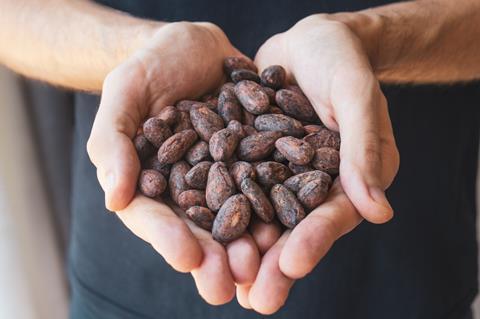
“It’s becoming more and more important for food producers to be sourcing sustainably, and this extends from raw ingredients to packaging,” says Macphie insights and marketing manager Kirsty Matthews.
Dawn’s Passmore adds that certification marks such as Rainforest Alliance give bakery manufacturers reassurance that cocoa is sourced ethically.
Old-fashioned provenance remains important, however, and labels such as Belgian chocolate can still carry weight with some consumers.
“The provenance of ingredients has always been seen as a classic gateway to premiumisation, offering a unique or better experience for the consumer,” says Adams from Baker & Baker. “For example, consumers recognise a Madagascan vanilla with its extra sweet and creamy flavours, however a Tahitian vanilla would deliver more floral and fruity notes.”
Although the classic flavours are unlikely to go out of fashion, bakers and ingredients suppliers continue to work hard to ensure they remain exciting and relevant – so what are the latest developments with the big three?

Chocolate
As the regular chart-topper on lists of the most popular flavour, it’s not surprising to see chocolate get a lot of attention from ingredients developers. In the past few weeks, Puratos and Barry Callebaut have both unveiled new forms of the stuff.
Barry Callebaut’s lower-sugar CCC chocolate is claimed to offer a higher cocoa content and purer cocoa flavour than traditional chocolate. It is produced using a new system of farming, fermenting and roasting and is described as chocolate as “as pure as it can be”.
Meanwhile, Puratos-owned Belgian chocolate brand Belcolade has launched So’Choc Cacao-Trace, which is a combination of fermented cocoa sourced through Puratos’ sustainable Cacao-Trace program and fermented buckwheat using a patented manufacturing process.
Michelle Aaron, cake NPD and innovations manager at Finsbury Food Group, expects to see further varieties of chocolate enter the market, particularly those around plant based and using alternative milks as a flavour profile.
“Additionally, we are starting to see more functional varieties of chocolate infused with ingredients that provide benefits such as anxiety reducing, sleep assisting and immunity building.”
Two relatively new chocolate variants – ruby and blonde – continue to gain traction in bakery, with their visual appeal making them well suited for products featured on social media.
Blonde chocolate features in retailer Christmas ranges, with Tesco selling a Christmas Present Torte Bar and Co-op a Golden Blonde Sponge Crown. Blonde chocolate also made an appearance at Easter, with M&S and Asda selling hot cross buns featuring the ingredient.
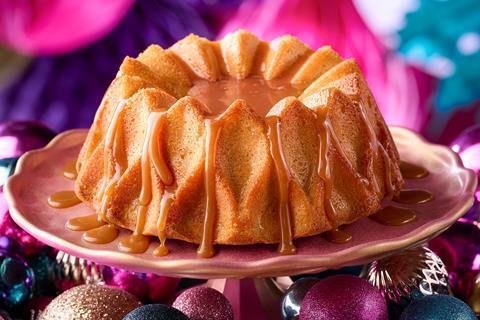
That said, use of both ruby and blonde chocolate is not without issues.
“It can be challenging to find bake-stable or vegan variants of blonde and ruby chocolate, which then limits application use,” points out Passmore. “Issues such as availability in the market and price has also made it difficult to incorporate them into new finished bakery products.”
Adams at Baker & Baker believes that although ruby chocolate presents long-term opportunities, its expense makes it a challenging ingredient during the cost of living crisis. “We’re looking at ways we can incorporate blonde chocolate into our products,” he says. “I personally see much more longevity with this. It is cost-neutral compared to other chocolates and delivers a wonderful caramel flavour that people will recognise and enjoy.”
The industry is also embracing a shift towards pairing chocolate with savoury flavours to meet the demands of consumers with less sweet palates, suggests University College Birmingham’s Kitty Glencross, one of Dawn Foods’ student ambassadors for 2023.
“These include chocolate with spices or herbs such as chocolate and cayenne, chocolate and rosemary, chocolate and chai or sweet chocolate combined with savoury flavours such as chocolate and tahini,” she says. “Consumers want the depth of flavour from pairing with complementary flavours.”
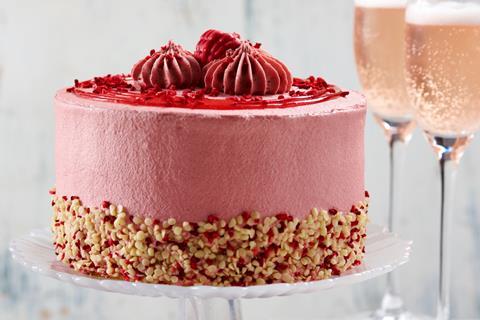
Baker & Baker has been experimenting with emerging flavour combinations using chocolate, such as yuzu, chilli, ginger, origin coffees and matcha, although the business doesn’t currently expect widespread adoption as value is such a high priority for shoppers.
Visuals are a hugely important element of sweet bakery, and decorations sculpted out of chocolate are making a big impact.
Passmore at Dawn points out the M&S Collection Helter Skelter Cake, which features a sculpted chocolate fairground helter skelter and comes with a sachet of edible snowballs to roll down it. Hidden underneath the helter skelter are chocolate penguins and snowflakes.
“This type of chocolate decoration adds theatre and interaction to food in the home and is really innovative,” she adds.
The versatility of chocolate allows for innovation in designs and textures, explains Jeff Turner, innovation controller at BBF, adding that techniques such as laser cutting and double drip are continuing to grow in popularity.
“Waffle, popping candy and biscuit, to name just a few, are being added to chocolate to add texture and enhance the flavour,” he says. ”We’re also seeing velvet spraying become increasingly popular, which is cocoa butter sprayed onto frozen chocolate.”
Baker & Baker, meanwhile, has been working with its suppliers on vivid and bright colours that can be added to white chocolate.
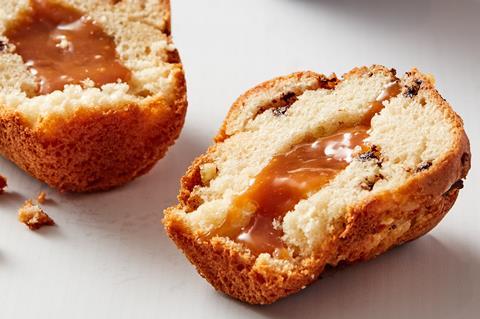
Caramel
Surely Brits have had enough of salted caramel by now? Not so, say bakers and ingredients suppliers, who believe it is firmly embedded as a mainstream flavour.
“Although very popular, it is far from waning,” says Passmore. “In fact, we see that salted caramel has replaced traditional caramel as its more modern successor.”
Bakels points out that salted caramel accounted for 1.5% of product innovation in Europe and was a top five flavour in global desserts and ice cream.
Traditional salted caramel is evolving with the use of salted butter caramel, dulce de leche and new flavour parings such as miso caramel, adds Turner at BBF. “We are also seeing different types of salt being introduced to salted caramel, such as Himalayan salt and sea salt, to extend the variations of salted caramel that are available.”
Bakels is confident that as consumer preferences and expectations evolve, caramel will continue to grow.
Salted caramel has replaced traditional caramel as its more modern successor
“Our latest bespoke developments include flavour-driven varieties such as liquorice, spiced ginger, speculoos and toffee apple, as well as dietary-focused caramels like protein-enriched and low sugar, low water, palm-free versions which tap into both flavour experience and more functional varieties,” says Bakels marketing manager Schofield.
He adds that the unique texture of caramel is one of its defining characteristics, and that flavours incorporating the familiar mouthfeel will do well with consumers.
Among the flavours winning over consumers at the moment is, of course, the speculoos-style caramel biscuit, which features in a wide range of dessert and bakery products.
Nostalgia is also a big driver of caramel-related NPD, with Cadbury’s Caramac-style Caramilk chocolate bars being the confectioner’s biggest UK launch last year.
Caramel and white chocolate is also a popular flavour combination, and Dawn feels the resurgence in white chocolate and blondies may see this continue to grow.
Looking ahead, Adams at Baker & Baker suggests there may be opportunities for regional caramels that lean into origins and provenance, but he warns that any innovation must provide a genuine point of difference.

Vanilla
Vanilla has been used as a flavouring for 800 years but don’t go suggesting it’s passé.
“Vanilla is a classic flavour but that doesn’t make it old-fashioned,” says Macphie insights and marketing manager Kirsty Matthews. “Vanilla is a building block flavour that can be transformed to deliver a range of concepts. Its subtle colour and flavour means it can be perfectly paired with more adventurous or ‘fad’ flavours.”
Matthews points out that the pale colouring of a vanilla cake mix or frosting means it will usually accept added colour, making it a suitable base for seasonal bakery concepts. This saves bakers from buying bulk quantities of alternative products they may only need for a short period.
Vanilla is more on the periphery as a standalone flavour in bakery
In some respects, vanilla has become more of a functional ingredient, suggests Adams, adding that Baker & Baker generally doesn’t use it independently.
“Vanilla is more on the periphery as a standalone flavour in bakery,” he says. “It is either combined to help enhance another ingredient such as a fruit, improve flavours in cakes and sponges where salt has been removed, or to add creamy notes to a base recipe.”
Turner at BBF points out that people are more likely to try new products when they recognise a traditional flavour. ”By pairing a relatively safe flavour like vanilla with new and exciting ingredients, products can have added appeal,” he says.
Meanwhile, Passmore feels vanilla is at the start of a resurgence, particularly in the case of premium vanilla bean or vanilla with provenance claims such as French or Madagascan.
“Traditionally seen as a basic flavour, the vanilla bean or a provincial vanilla variety are now seen as an authentic natural flavour and are beginning to feature more prominently in desserts, particular to add a premium feel,” she explains.
Passmore advises that suppliers use an authentic natural vanilla flavour, ideally one with provenance.
“Using vanilla bean can also bring more authenticity to the vanilla flavour used due to the flecks giving a better visual in the finished product,” she points out, adding that Dawn predicts vanilla will continue to feature as a primary flavour in bakery, particularly where there is an associated sustainability or provenance story.
“Vanilla is an extremely familiar flavour and therefore has wide appeal – it will continue to offer a great flavour option for bakers for a long while yet.”
Aaron at Finsbury Food Group feels there is plenty of scope for provenance in vanilla beyond Madagascar.
“We don’t see the lesser-known varieties called out, so there’s definitely scope for innovation and opportunities for the use of vanilla to evolve.”
ADVERTISEMENT: BRITISH BAKELS
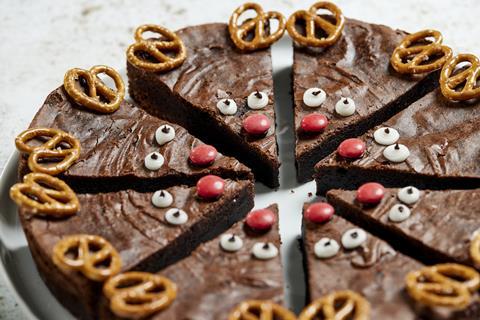
Recipe: Brownie Reindeer
Yield: 24 brownies
Ingredients
- Rich Chocolate Brownie Complete, 3,000g
- Vegetable oil, 600g
- Water, 600g
- White Fudgice
- Rich Chocolate Fudgice
- Smarties
- Pretzels
Method
- Add Rich Chocolate Brownie Complete and water into a mixing bowl, fitted with a beater
- Mix for 2 minutes on slow speed
- Scale at 1,200g into a 9” round tin
- Bake at 160°C for approx. 60 minutes
- Once cooled, cut into eight even triangles
- Secure two pretzels (antlers) and one smartie (nose) on each triangle, using warmed Rich Chocolate Fudgice
- Pipe two small circles using White Fudgice (eyes), followed by two piped dots of Rich Chocolate Fudgice (pupils).



















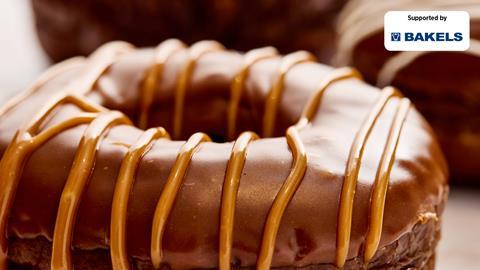




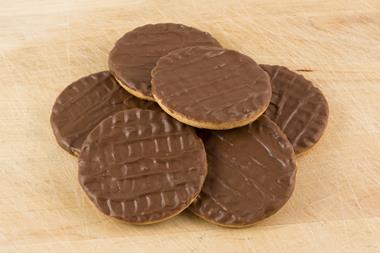

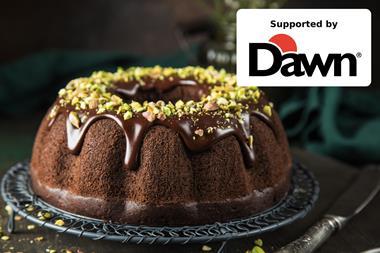
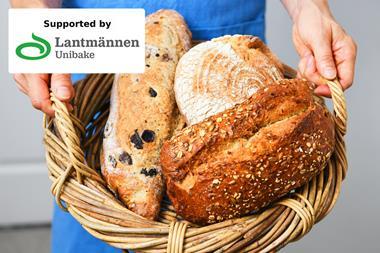
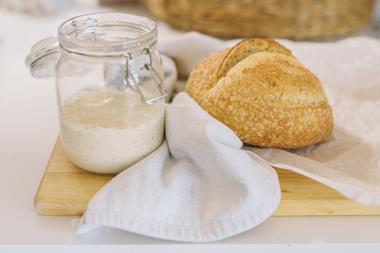




No comments yet